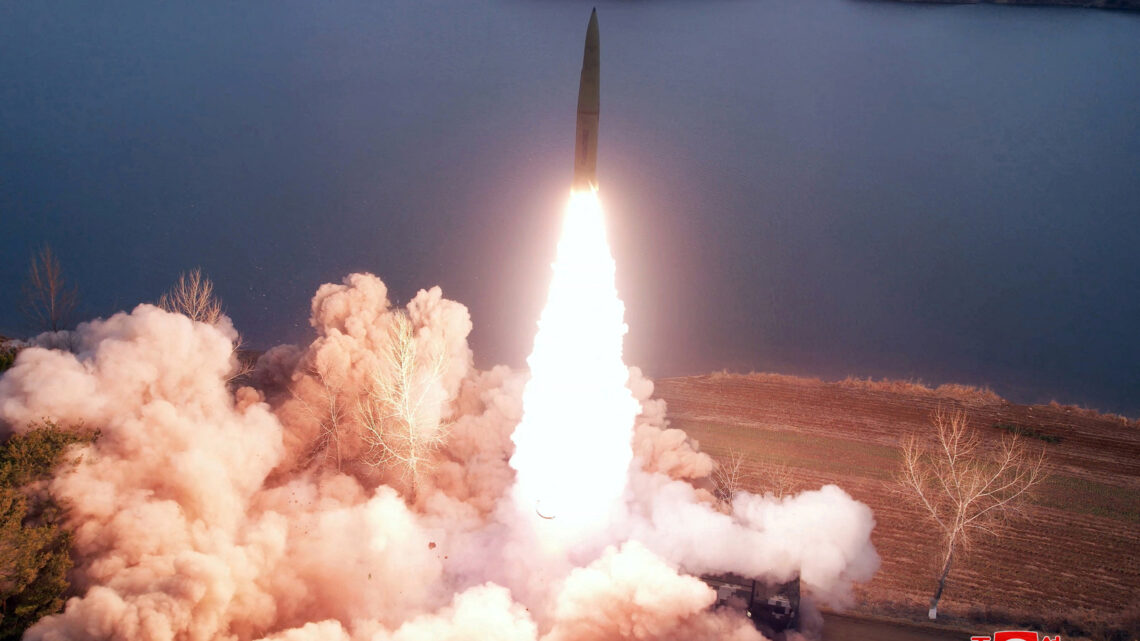
Only hours before the leaders of South Korea and Japan were scheduled to meet at a Tokyo summit, which was anticipated to be overshadowed by North Korean nuclear threats, North Korea test-launched an intercontinental ballistic missile as a show of military strength.
The launch, the North’s third weapons test this week and its first ICBM test in a month, comes as joint military drills between South Korean and American forces are ongoing, which Pyongyang views as a practice for an invasion.
The North Korean ICBM was launched from Pyongyang, the capital of North Korea, at roughly 7.10 a.m., according to the South Korean military. It then flew towards the eastern waters off the coast of the Korean Peninsula. According to the statement, the South Korean military maintains preparedness in close cooperation with the US.
The Sunan neighbourhood, where Pyongyang’s international airport is located, has become a key testing ground where the North has recently launched the majority of its ICBMs, all of which were flown at a high angle to avoid neighbouring countries’ land.
After a roughly hour-long flight, the missile most likely touched down outside of Japan’s exclusive economic zone, according to Japanese Defense Minister Yasukazu Hamada. The landing place is near to where several North Korean ICBMs recently crashed following test flights; it is roughly 250 kilometres (155 miles) off the western island of Oshimaoshima.
Hours before South Korean President Yoon Suk Yeol was scheduled to meet with Japanese Prime Minister Fumio Kishida in Tokyo for a summit aimed at mending strained relations and strengthening trilateral security cooperation with the United States to counter North Korean threats, Thursday’s launch took place.
North Korea has increased its testing efforts this year after executing a record number of missile tests in 2017, including the launch of its Hwasong-15 intercontinental ballistic missile on February 18. Following the ICBM launch, North Korea said the test was conducted to increase its ability to deliver “fatal” nuclear attacks on its adversaries.
Leader Kim Jong Un this week ordered his military to be ready to oppose what he called “frantic war preparedness measures” by his country’s adversaries, alluding to the ongoing manoeuvres between the U.S. and South Korea. The North’s continuous aggressive run of nuclear tests has been widely anticipated.
Last week, Pyongyang launched short-range ballistic missiles across its territory into its eastern sea while also firing cruise missiles from a submarine. In a Kim Jong Un-supervised exercise last week, North Korea also launched at least six short-range ballistic missiles from a western coastal region, which the country’s official media characterised as a mock strike on an unnamed South Korean airfield.
Computer simulations and live-fire field training are both part of the US-South Korean drills, which started on Monday and will last until March 23. More than 70 missiles, including nuclear-capable ones aimed at South Korea, Japan, and the U.S. mainland, were test-fired by Pyongyang last year. Many of the tests, according to North Korea, were a warning over earlier South Korean-American military exercises.
The South Korea-Japan meeting was planned after Yoon’s administration last week made significant strides towards mending the bilateral ties damaged by Japan’s colonial domination over the Korean Peninsula from 1910 to 1945.
Although it has encountered fierce domestic opposition, Yoon’s plan to use local funds to compensate Koreans forced into industrial slavery during colonial rule without contributions from the Japanese companies that employed them reflects his determination to strengthen ties with Japan and increase Seoul-Tokyo-Washington security cooperation.
By adopting a new national security strategy in December that includes the objectives of acquiring preemptive strike capabilities and cruise missiles to counter growing threats from North Korea, China, and Russia, Tokyo has also significantly departed from its post-World War II principle of self-defence only under Kishida.



Get Your Daily Update Directly In Your Inbox